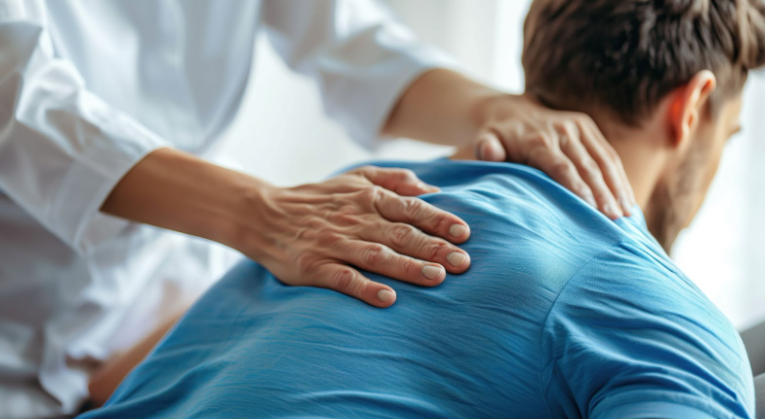The Importance of Physical Therapy in Combating Joint Pain
Joint pain is a widespread issue that affects people of all ages, with a significant impact on adults. Various factors, such as arthritis, injury, or overuse, can lead to this condition. According to the Centers for Disease Control and Prevention (CDC), around 15 million adults in the United States experience severe joint pain due to arthritis alone. This common ailment can significantly affect daily activities, limiting mobility and diminishing the overall quality of life. Early intervention and effective management are essential to prevent joint pain from worsening and maintain an active lifestyle.
Physical therapy is crucial in managing joint pain, providing non-invasive methods to ease discomfort and enhance function. The main objectives of physical therapy include reducing pain, improving mobility, and preventing further injury. Each therapy plan is customized to meet the specific needs and conditions of the individual, ensuring a personalized approach to care.
Techniques Used in Physical Therapy for Joint Pain
Physical therapy employs a variety of techniques to effectively address joint pain:
Manual Therapy
This includes hands-on methods such as massage, joint mobilization, and manipulation. These techniques aim to relieve pain and improve joint mobility, contributing to overall physical well-being.
Exercise Therapy
Physical therapists create exercise programs focused on strengthening muscles, improving flexibility, and enhancing joint function. These exercises are vital for maintaining joint health and preventing future issues.
Body Mechanics Education
Educating patients about proper body mechanics is crucial to prevent further joint strain and injury. Understanding how to move safely and efficiently can make a significant difference in daily activities.
Red Light Therapy
This non-invasive therapy for joint pain has tremendous benefits in reducing inflammation and improving joint mobility. With consistent application, patients often find a return to activity and improved quality of life.
Class IV Laser Therapy
Class IV laser therapy improves blood flow, reduces inflammation, and reduces swelling. It’s a non-drug, non-surgical treatment for healing joint pain and arthritis.
Preventing Future Joint Damage
Physical therapy not only addresses current pain but also plays a preventative role in avoiding future joint issues. Maintaining an active lifestyle and incorporating therapy exercises into daily routines
can help manage chronic conditions like arthritis. Ongoing therapy is beneficial in sustaining joint health and ensuring long-term relief from pain.
Accessing Physical Therapy Services in Richmond, VA
Richmond and its surrounding areas, including Henrico, Midlothian, Chesterfield, Glen Allen, and Short Pump, offer a variety of physical therapy services. Local facilities provide the advantage of easy access and the opportunity to build a rapport with therapists who understand the community's needs. Community resources and programs are available to assist residents in accessing these services, enhancing their ability to receive consistent care.
Success Stories and Patient Experiences
Many Richmond residents have experienced significant benefits from physical therapy in managing joint pain. Anecdotal evidence and case studies highlight improvements in mobility, pain reduction, and quality of life. Patients often emphasize the importance of a consistent and personalized approach to therapy, which is crucial for achieving positive outcomes.
Expert Opinions and Recommendations
Local physical therapists and healthcare professionals in Richmond highlight the importance of physical therapy in joint pain management. Recent studies have demonstrated the effectiveness of therapy in reducing pain and improving function, supporting its role as a cornerstone of non-surgical treatment. Individuals considering physical therapy are encouraged to seek therapists who offer personalized care plans and to prepare for sessions by discussing their specific needs and goals.
Integrating Physical Therapy with Other Non-Surgical Treatments
Physical therapy can be effectively combined with other non-surgical treatments, such as chiropractic care or medical aesthetics, to enhance outcomes. A holistic approach to joint pain management addresses pain from multiple angles, providing comprehensive care. Communication between healthcare providers is essential to ensure cohesive treatment plans that cater to the patient's overall well-being.
Cultural and Geographical Considerations in Richmond, VA
Richmond's unique cultural attitudes towards physical therapy and joint pain management can influence treatment approaches. Local initiatives and events that promote physical health and wellness contribute to a supportive environment for individuals seeking care. The geographical landscape of Richmond also affects the availability and types of services offered, with various facilities catering to different needs.
Future Trends in Physical Therapy for Joint Pain
Emerging trends and technologies in physical therapy hold the potential to significantly impact joint pain management. Advancements in personalized treatment plans, driven by technology and research, promise to enhance the effectiveness of therapy. As the healthcare landscape evolves, physical therapy will likely play an increasingly prominent role in managing joint pain.
The Role of Nutrition in Joint Health
Proper nutrition is a key factor in maintaining joint health and complementing physical therapy efforts. A balanced diet rich in anti-inflammatory foods
can help reduce joint pain and support overall well-being. Nutrients such as omega-3 fatty acids, antioxidants, and vitamins are essential for joint health and can be integrated into daily meals to enhance therapy outcomes.
The Psychological Aspect of Joint Pain Management
The psychological aspect of managing joint pain is often overlooked but is equally important. Chronic pain can lead to emotional stress, anxiety, and depression, which can further exacerbate physical symptoms. Incorporating psychological support and stress management techniques into a comprehensive treatment plan can improve overall outcomes and enhance the effectiveness of physical therapy.
The Importance of Patient Education and Empowerment
Patient education and empowerment are critical components of successful joint pain management. Educating patients about their condition, treatment options, and self-management strategies can lead to better adherence to therapy and improved outcomes. Empowered patients are more likely to take an active role in their care, making informed decisions that positively impact their joint health.
The Impact of Technology on Physical Therapy
Technology is transforming the field of physical therapy,
offering new tools and methods to enhance treatment. Virtual reality, red light therapy, Class IV laser therapy, telehealth, and wearable devices are becoming increasingly popular in therapy settings, providing innovative ways to monitor progress and engage patients. These technological advancements can improve accessibility and convenience, making physical therapy more effective and widely available.
Understanding joint pain and exploring the role of physical therapy can lead individuals to take meaningful steps toward managing their condition and improving their quality of life. Richmond residents have access to a wealth of resources and services that can support their journey to better joint health. By embracing a holistic approach that includes physical therapy, nutrition, psychological support, and patient education, individuals can achieve long-term relief and maintain an active lifestyle.
For more information on managing joint pain through physical therapy,
contact Chronic Care of Richmond today. Our team is dedicated to providing personalized care and support to help you achieve optimal joint health and overall well-being.



Connect With Us
LOCATION
8639 Mayland Dr #105, Henrico, VA 23294
PHONE
BUSINESS HOURS
Mon, Wed, Thu, Fri - 9 am to 5 pm
Tuesday - 9 am to 1 pm

